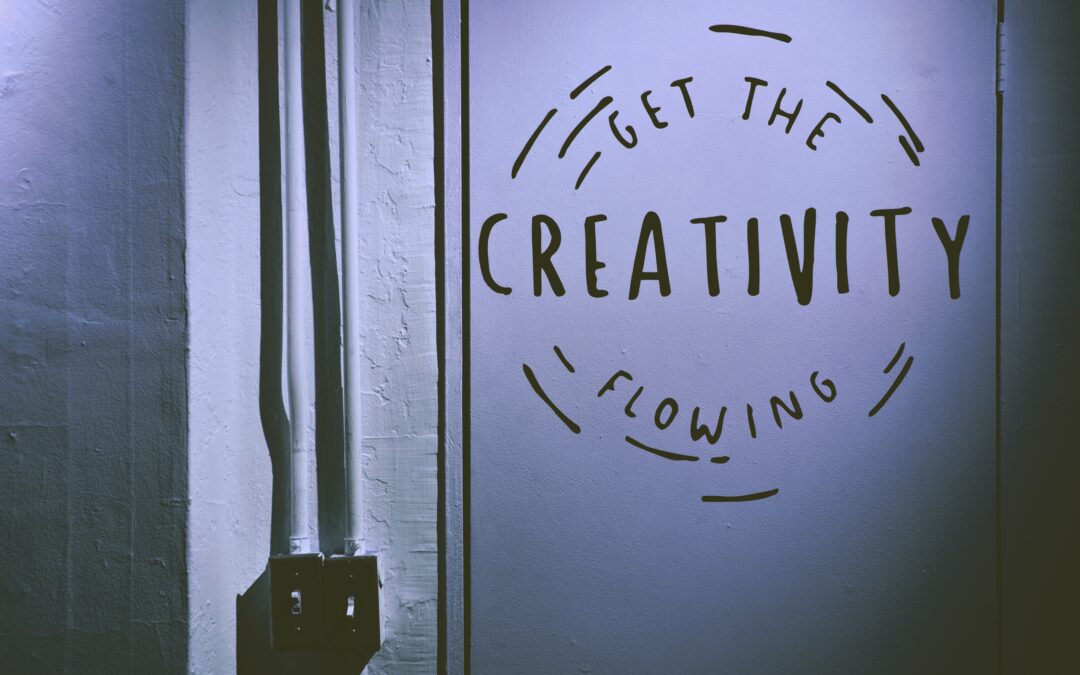
by Robyn Bolton | Oct 11, 2022 | Customer Centricity, Innovation, Tips, Tricks, & Tools
Q: How might we brainstorm new ideas to serve our customers better?
A: Have a brainstorming session that starts with “How Might We help customers [Job to be Done/problem]?”
If only it were that simple.
How Might We (HMW) is an incredible tool (not BS, as some would assert), but we misuse it. We focus too much on the “we” and not enough on the “might.”
Might > We
HMW was first used to prompt people to be “wildly creative while simultaneously leveraging [company’s] innate strengths.”
IDEO popularized the prompt as a way to solve “wicked problems” – problems so complex that there is no right or wrong answer.
In both of these cases, the assumption was that the word “might” would free people from the shackles of today’s thinking and constraints and give people permission to dream without fear of judgment and reality.
“We” kept ideas tethered to the reality of the company’s “innate strengths,” providing a modicum of comfort to executives worried that the session wouldn’t result in anything useful and would, therefore, be a waste of time.
We > Might
Alas, as time went on and HMW became more popular, we lost sight of its intent (prompt wildly creative thinking about wicked problems) and twisted it to our purposes.
- We end the HMW sentence with our problems (e.g., HMW cut costs by getting more customers to use self-service tools?).
- We use it to brainstorm solutions to things that aren’t even problems (e.g., HMW eliminate all customer service options that aren’t self-serve?)
- We mentally replace “might” with “will” so we can emerge from brainstorming sessions with a tactical implementation plan.
How Might Can YOU Fix HMW?
If you’re not getting creative, radical, or unexpected ideas from your brainstorming sessions, you have an HMW problem.
As a result, continuing to use HMW as a tool to prompt creative, radical, or unexpected ideas is the definition of insanity. And you are not insane,
Instead, mix it up.
Use different words to articulate the original intent of HMW.
How would we solve this problem if the answer to every request is YES?
Innovation thrives within constraints. Brainstorming doesn’t.
Even when you tell people not to constrain themselves, even implore them to value “quantity over quality,” you still get more “safe” ideas rather than more “crazy” ideas.
Do more than tell. Make a world without constraints real. Explicitly remove all the constraints people throw at ideas by creating a world of infinite money, people, capabilities, willingness, appetite for risk, and executive support. Doing this removes the dreaded “but” because there is no “but we don’t have the money/people/capabilities” or “but management will never go for it” and creates space for “and.”
What would we ask for if we were guaranteed a YES to only ONE request?
This question is often asked at the end of a brainstorm to prioritize ideas. But it’s equally helpful to ask it at the beginning.
This question shifts our mindset from “the bosses will never say yes, so I won’t even mention it” to “the bosses will say yes to only one thing, so it better be great!” It pulls people off the sidelines and reveals what people believe to be the most critical element of a solution. It drives passionate engagement amongst the whole team and acts as a springboard to the next brainstorm – How Might We use (what they said yes to) to solve (customers’ Jobs to be Done/problem)?
How would we solve the problem if the answer to every request is NO?
This one is a bit risky.
Some people will throw their hands in the air, declare the exercise a waste of time and effort, and collapse into a demotivated blob of resignation.
Some people will feel free. As Seth Godin wrote about a journal that promises to reject every single person who submits an article, “The absurdity of it is the point. Submitting to them feels effortless and without a lot of drama, because you know you’re going to get rejected. So instead of becoming attached to the outcome, you can simply focus on the work.”
For others, this will summon their inner rebel, the part of themselves that wants to stick it to the man, prove the doubters wrong, and unleash a great “I told you so” upon the world. To them, “No” is the start of the conversation, not the end. It fires them up to do their best work.
Don’t invite the first group of people to the brainstorm.
Definitely invite the other two groups.
How Might Will/Do YOU Fix HMW?
If you want something different, you need to do something different.
Start your next brainstorm with a new variation on the old HMW prompt.
How do people react? Does it lead to more creative or more “safe” ideas?
How might we adjust to do even better next time?

by Robyn Bolton | Oct 5, 2022 | Customer Centricity, Innovation, Stories & Examples, Tips, Tricks, & Tools
Being the smart innovator (and businessperson) you are, you know it’s important to talk to customers. You also know it’s important to listen to them.
It’s also important to ignore your customers.
(Sometimes)
Customers will tell you what the problem is. If you stay curious and ask follow-up questions (Why? and Tell me more), they’ll tell you why it’s a problem and the root cause. You should definitely listen to this information.
Customers will also tell you how to fix the problem. You should definitely ignore this information.
To understand why, let me tell you a story.
Eye contact is a problem
Years ago, two friends and I took a day trip to Maine. It was late in Fall, and many lobster shacks dotting the coast were closed for the season. We found one still open and settled in for lunch.
Now, I’m a reasonably adventurous eater. I’ll try almost anything once (but not try fried tarantulas). However, I have one rule – I do not want to make eye contact with my food.
Knowing that lobsters are traditionally served with their heads still attached, I braced for the inevitable. As the waitress turned to me, I placed the same order as my friends but with a tiny special request. “I’ll have the lobster, but please remove its head.”
You know that scene in movies when the record scratches, the room falls silent, and everyone stops everything they’re doing to stare at the person who made an offending comment? Yeah, that’s precisely what happened when I asked for the head to be removed.
The waitress was horrified,” Why? That’s where all the best stuff is!”
“I don’t like making eye contact with my food,” I replied.
She pursed her lips, jotted down my request, and walked away.
A short time later, our lunch was served. My friends received their lobsters as God (or the chef) intended, head still attached. Then, with great fanfare, my lobster arrived.
Its head was still attached.
But we did not make eye contact.
Placed over the lobster’s eyes were two olives, connected by a broken toothpick and attached to the lobster’s “ears” by two more toothpicks.
The chef was offended by my request to remove the lobster’s head. But, because he understood why I wanted the head removed, he created a solution that would work for both of us – lobster-sized olive sunglasses.
Are you removing the head or making sunglasses?
Customers, like me, are experts in problems. We know what the problems are, why they’re problems, and what solutions work and what don’t. So, if you ask us what we want, we’ll give you the solution we know – remove the head.
Innovators, like you and the chef, are experts in solutions. You know what’s possible, see the trade-offs, and anticipate the consequences of various choices. You also take great pride in your work and expertise, so you’re not going to give someone a sub-par solution simply because they asked for it. You’re going to provide them with olive sunglasses.
Next time you talk to customers, stay curious, ask open-ended questions, ask follow-up questions, and build a deep understanding of their problems. Then ignore their ideas and suggestions. They’ll only stand in the way of your olive sunglasses.

by Robyn Bolton | Aug 18, 2022 | Customer Centricity, Innovation, Tips, Tricks, & Tools
Most of my advice to leaders who want to use innovation to grow their businesses boils down to two things*:
- Talk (and listen) to customers
- Do something
But what if you don’t want to talk to customers?
After all, talking to customers can be scary because you don’t know what they’ll say. It can be triggering if they say something mean about your product, your business, or even you as a person. It can be draining, especially if you’re an introvert.
Plus, there are so many ways to avoid talking to customers – Send a survey, hire a research firm to write a report, invoke the famous Steve Jobs quote about never doing customer research.
Isn’t it just better to stay tucked away in the office, read reports, state opinions as if they are facts (those opinions are based on experience, after all), and make decisions?
Nope.
It is not better. It is also not safer, easier, or more efficient.
To make the best decisions, you need the best data, which comes from your customers.
But that doesn’t mean you need to talk to them to get it.
The best data
The best data helps you understand why your customers do what they do. This is why Jobs to be Done is such a powerful tool – it uncovers the emotional and social Jobs to be Done that drive our behavior and choices (functional Jobs to be Done are usually used to justify our choices).
But discovering Jobs to be Done typically requires you to talk to people, build rapport and trust in a one-on-one conversation, and ask Why? dozens of times so surface emotional and social JTBD.
Luckily, there are other ways to find Jobs to be Done that don’t require you to become an unlicensed therapist.
Observe your customers
Go where your customers are (or could be) experiencing the problem you hope to solve and try to blend in. Watch what people are doing and what they’re not doing. Notice whether people are alone or with others (and who those others are – kids, partners, colleagues, etc.). Listen to the environment (is it loud or quiet? If there’s noise, what kind of noise?) and to what people are saying to each other.
Be curious. Write down everything you’re observing. Wonder why and write down your hypotheses. Share your observations with your colleagues. Ask them to go out, observe, wonder, and share. Together you may discover answers or work up the courage to have a conversation.
Quick note – Don’t be creepy about this. Don’t lurk behind clothing racks, follow people through stores, peep through windows, linger too long, or wear sunglasses, a trench coat, and a fedora on a 90-degree day, so you look inconspicuous. If people start giving you weird looks, find a new place to people-watch.
Observe yourself
Humans are fascinating, and because you are a human, you are fascinating. So, observe yourself when you’re experiencing the problem you’re hoping to solve. Notice where you are, who is with you, the environment, and how you feel. Watch what you do and don’t do. Wonder why you chose one solution over another (or none).
Be curious. Write down everything you did, saw, and felt and why. Ask your colleagues to do the same. Share your observations with your colleagues and find points of commonality and divergence, then get curious all over again.
Quick note – This only works if you have approximately the same demographic and psychographic profiles and important and unsatisfied Jobs to be Done of your target customers.
Be your customer
What if your business solves a problem that can’t be easily observed? What if you don’t have the problem that your business is trying to solve?
Become your customer (and observe yourself).
Several years ago, I worked with a client that made adult incontinence products. I couldn’t observe people using their products, and I do not have important (or unsatisfied) Jobs to be Done that the products can solve.
So, for one day, I became a customer. I went to Target and purchased their product. I went home, wore, and used the product. I developed a deep empathy for the customer and wrote down roughly 1 million ways to innovate the product and experience.
Quick note – Depending on what’s required to “be your customer,” you may need to give people a heads up. My husband was incredibly patient and understanding but also a little concerned on the day of the experiment.
It’s about what you learn, not how you learn it
It’s easy to fall into the trap of thinking there is one best way to get insights. I’m 100% guilty (one-on-one conversations are a hill I have died on multiple times).
Ultimately, when it comes to innovation and decision-making, the more important thing is having, believing, and using insights into why customers do what they do and want what they want. How you get those insights is an important but secondary consideration.
* Each of those two things contains A TON of essential stuff that must be done the right way at the right time otherwise, they won’t work, but we’ll get into those things in another article

by Robyn Bolton | Aug 10, 2022 | Customer Centricity, Innovation, Tips, Tricks, & Tools
Between theory and practice is a nearly infinite chasm of superficial understanding and unearned confidence. This is no more true than in the case of Jobs to be Done (JTBD), and I can say that with confidence because I spent years in the chasm.
Years.
But I clawed my way up and out and experienced why JTBD is the single most powerful and transformative tool you can use to drive growth.
Want to skip the dive into the canyon and the long slow climb out?
What is Jobs to be Done (JTBD)?
A Job to be Done is a problem that a person is experiencing and/or progress a person wants to make in a given circumstance.
Although the origins of the phrase and theory are up for debate, many people point to Clayton Christensen, author of The Innovator’s Dilemma, as the originator of the phrase. (if you enjoy a good nerd-fight, and who doesn’t, you can read more from each person claiming to be The creator here, here, here, and here)
“The Milkshake Story” is an excellent example of JTBD. You can watch Clay tell it here. Or, remember the first, and still beautifully correct, articulation of JTBD, from a 1923 ad for a plumbing company in Reno, Nevada:
“When you buy a razor, you buy a smooth chin—but you could wear a beard.
When you buy a new suit, you buy an improved appearance—but you could make the old one do.
When you buy an automobile, you buy speedy transportation—but you could walk.
But when you buy plumbing, you buy cleanliness—for which there is no substitute!”
Why is JTBD so amazing?
Jobs to be Done surfaces the Why behind the What.
When you ask, “What do you want?” you’re asking people to define the solution. Whatever they say will be wrong because it is rooted in what exists. That’s why everyone from Henry Ford (supposedly) to Steve Jobs dismissed the usefulness of customer research.
If you ask the wrong question (What do you want?), you’ll get the wrong answer.
When you ask, “Why?” you’re asking people to define the problem. Whatever they say will be right (true) because it is rooted in their experience – the pain, frustration, and annoyance of today’s inadequate solutions.
Once you pair your understanding of why something works or doesn’t work with your knowledge of what is possible (not just what currently exists), then YOU are defining a solution that does its job better than anything else on the market.
When should you use Jobs to be Done?
Always. There is no “wrong” time to use it, and it’s valuable at every step of the innovation process:
- Discovery: Identify un- or under-served markets by finding important and unsatisfied JTBD
- Ideation, solution development, prototyping, market testing: Assess how well ideas solve important and unsatisfied JTBD and whether people are willing to pay for satisfaction
- Post-launch: Understand how JTBD are shifting in importance and satisfaction as new solutions enter the market and change the basis of competition
How to identify Jobs to be Done
Full disclosure, everything that follows sounds simple but is extremely challenging. I’ve trained hundreds of people in this process. 1% immediately do it well. At least 50% never figure it out. The other 49% of us practice every chance we get – from formal qualitative research to casual conversations with friends – and eventually, we get it.
Always start with one-on-one conversations because you don’t know what you don’t know (even if you think you know, trust me, you don’t). You’re going to ask questions that invite people to bare their souls and all of their quirks, and they will. But not if there’s a crowd.
- Identify no more than three questions that must be answered by the end of the conversation. Any more than that, you run the risk of the conversation becoming an interrogation, and no one will reveal their quirks and insecurities if they feel interrogated.
- Be human. Introduce yourself as a person (where you live, why you’re interested in speaking with them, what interests you about the topic), not as a professional (name, title, serial number). Humans want to connect with humans, not business cards.
- Be genuinely interested in the person you’re talking to. Ask them to introduce themselves and chime in when you find a shared interest. People will share more with you if you share with them.
- Ask only open-ended questions. People want to share their story. Let them. Don’t rush them. If they start to go off track, gently guide them back. This is about them, not you.
- Ask at least two follow-up questions. The first answer is never the real answer. It’s the answer they think you want to hear or the answer that puts them in the best light. Ask, “Why?” Say, “Tell me more.” Encourage with “And what else?” You’ll get the real answer only if you are patient and curious.
- Let the silence work for you. Ask the question and then stop talking. Don’t offer potential answers. Don’t explain the question. Just ask and shut up. In more Western cultures, silence is deeply uncomfortable, so people will do almost anything to fill it, including sharing their quirks and baring their souls. Sit and silently count to 8. Most people will start talking by five.
Once you identify Jobs to be Done, usually through approximately 10 JTBD conversations, you know what you don’t know. From here, you can use focus groups to refine your insights, surveys to quantify the market, or ideation sessions to develop solutions.
In conclusion
If you want to cross (or avoid) the chasm between reading about Jobs to be Done and using it as a tool to create value and growth, you’ve got to go beyond theory and DO the work.
As with all new skills, you’ll need to be bad at it before you can be good at it. But with practice, you WILL get good.
You may even use your deep understanding and well-earned confidence to help others make the crossing.

by Robyn Bolton | Jul 24, 2022 | Customer Centricity, Innovation, Leadership, Metrics, Stories & Examples, Strategy
Many years ago, Clay Christensen visited his firm where I was a partner and told us a story*.
“I imagine the day I die and present myself at the entrance to Heaven,” he said. “The Lord will show me around, and the beauty and majesty will overcome me. Eventually, I will notice that there are no numbers or data in Heaven, and I will ask the Lord why that is.”
“Data lies,” the Lord will respond. “Nothing that lies can be in Heaven. So, if people want data, I tell them to go to Hell.”
We all chuckled at the punchline and at the strength of the language Clay used (if you ever met him, you know that he was an incredibly gentle and soft-spoken man, so using the phrase “go to Hell” was the equivalent of your parents unleashing a five-minute long expletive-laden rant).
“If you want data, go to Hell.”
Clay’s statement seems absolutely blasphemous, especially in a society that views quantitative data as the ultimate source of truth:
- “In God we trust. All others bring data.” W. Edward Deming, founding Father of Total Quality Management (TQM)
- “Above all else, show the data.” – Edward R. Tufte, a pioneer in the field of data visualization
- “What gets measured gets managed” – Peter Drucker, father of modern management studies
But it’s not entirely wrong.
Quantitative Data’s blessing: A sense of safety
As humans, we crave certainty and safety. This was true millennia ago when we needed to know whether the rustling in the leaves was the wind or a hungry predator preparing to leap and tear us limb from lime. And it’s true today when we must make billion-dollar decisions about buying companies, launching products, and expanding into new geographies.
We rely on data about company valuation and cash flow, market size and growth, and competitor size and strategy to make big decisions, trusting that it is accurate and will continue to be true for the foreseeable future.
Quantitative Data’s curse: The past does not predict the future
As leaders navigating an increasingly VUCA world, we know we must prepare for multiple scenarios, operate with agility, and be willing to pivot when change happens.
Yet we rely on data that describes the past.
We can extrapolate it, build forecasts, and create models, but the data will never tell us with certainty what will happen in the future. It can’t even tell us the Why (drivers, causal mechanisms) behind the What it describes.
The Answer: And not Or
Quantitative data Is useful. It gives us the sense of safety we need to operate in a world of uncertainty and a starting point from which to imagine the future(s).
But, it is not enough to give the clarity or confidence we need to make decisions leading to future growth and lasting competitive advantage.
To make those decisions, we need quantitative data AND qualitative insights.
We need numbers and humans.
Qualitative Insight’s blessing: A view into the future
Humans are the source of data. Our beliefs, motivations, aspirations, and actions are tracked and measured, and turned into numbers that describe what we believed, wanted, and did in the past.
By understanding human beliefs, motivations, and aspirations (and capturing them as qualitative insights), we gain insight into why we believed, wanted, and did those things and, as a result, how those beliefs, motivations, aspirations, and actions could change and be changed. With these insights, we can develop strategies and plans to change or maintain beliefs and motivations and anticipate and prepare for events that could accelerate or hinder our goals. And yes, these insights can be quantified.
Qualitative Insight’s curse: We must be brave
When discussing the merit of pursuing or applying qualitative research, it’s not uncommon for someone to trot out the saying (erroneously attributed to Henry Ford), “If I asked people what they wanted, they would have said a horse that goes twice as fast and eats half as much.”
Pushing against that assertion requires you to be brave. To let go of your desire for certainty and safety, take a risk, and be intellectually brave.
Being brave is hard. Staying safe is easy. It’s rational. It’s what any reasonable person would do. But safe, rational, and reasonable people rarely change the world.
One more story
In 1980, McKinsey predicted that the worldwide market for cell phones would max out at 900,000 subscribers. They based this prediction on solid data, analyzed by some of the most intelligent people in business. The data and resulting recommendations made sense when presented to AT&T, McKinsey’s client.
Five years later, there were 340,213 subscribers, and McKinsey looked pretty smart. In 1990, there were 5.3 million subscribers, almost 6x McKinsey’s prediction. In 1994, there were 24.1M subscribers in the US alone (27x McKinsey’s global forecast), and AT&T was forced to pay $12.6B to acquire McCaw Cellular.
Should AT&T have told McKinsey to “go to Hell?” No.
Should AT&T have thanked McKinsey for going to (and through) Hell to get the data, then asked whether they swung by earth to talk to humans and understand their Jobs to be Done around communication? Yes.
Because, as Box founder Aaron Levie reminds us,
“Sizing the market for a disruptor based on an incumbent’s market is like sizing a car industry off how many horses there were in 1910.”
* Except for the last line, these probably (definitely) weren’t his exact words, but they are an accurate representation of what I remember him saying

by Robyn Bolton | Apr 25, 2022 | Customer Centricity, Innovation
I love engineers*
Engineers are the ultimate problem-solvers. They see a problem and the need to fix it. Engineers believe every solution can be improved, every process can be more efficient, and every system optimized.
Which is why I nearly fell out of my chair when, after explaining (again) the importance of asking 5 Whys when interviewing customers and asking why the team was struggling to do so, an engineer said,
“We troubleshoot the why. Asking would be a show of not knowing.”
Wha?!?!?
In my head, I screamed, “But we don’t know! We don’t know the problem because the customer defines the problem! But people are terrible at defining problems, so we ask why. So that we can understand the root cause, then articulate the problem, then solve it!”
Instead of actually screaming, I took a deep breath and said, “Mmmmmm, interesting.”
Admittedly, not the most helpful response.
Why Asking “Why?” is hard
How often do you ask, “Why?”
How often do people on your team ask, “Why?”
Probably not often and probably for reasons that feel very sensible:
- It’s my job to know why
- I don’t want people to think I don’t know
- I don’t know, but I think I should
- People will think I’m stupid/not good at my job
- I’ll lose credibility, and that will impact my job/job prospects/paycheck
And, let’s be honest, those reasons are quite sensible depending on the circumstance.
But feelings aren’t facts, and I still didn’t understand why problem-solvers struggled to ask, “Why?”
So, I sought out an engineer and asked, “Why?”
He took a deep breath and said, “Mmmmmm, it’s complicated.”
When asking “Why?” should be hard.
There are lots of different types of engineers, but when you focus on engineers working in companies (as opposed to those in academia or research labs), most of them work on machines, code, systems, or processes, that exists or are knowable.
In this context, when there’s a problem, it’s the engineer’s job to identify why the problem occurred and how to fix it.
To troubleshoot the Why, engineers use tools specifically designed to collect and analyze data. While those tools aren’t perfect, engineers know how to calibrate the data by applying different allowances and tool combinations.
“So,” I summarized, “when you’re dealing with something objectively knowable, like a machine or code, and you have a proven tool for troubleshooting, you shouldn’t ask, ‘Why?’ Right?”
“Sure,” replied the engineer, who is very used to me over-simplifying things and knows better than to try to convince me that his long and complicated answer is a better way to go.
When asking “Why?” should be easy
Humans can also be thought of as machines, code, systems, and processes, but, unlike those that engineers work on, we’re not objectively knowable. As neuroscientist Antonio Damasio wrote, “We are not thinking machines. We are feeling machines that think.”
In this context, when a human has a problem, the human is the only one who knows why the problem occurred. This means that we must find the Why before we can troubleshoot it.
Finding the Why and troubleshooting in this circumstance is challenging because we don’t have tools specifically designed to collect and analyze data. We ARE the tools. We must ask the right questions and listen without assuming or interpreting to ensure that we get accurate answers.
How to make asking “Why?” easier
As a problem-solver, it’s always essential that you find the root cause.
How you find that root cause varies.
If the problem is occurring in something that is objectively knowable and accurately measured and assessed with proven tools, then yes, it IS your job to know why there’s a problem and troubleshoot it.
If the problem is occurring in something not objectively knowable (like a human), then it is your job to ask Why (usually several times) before you troubleshoot.
After all, even if you’re an engineer, you can’t solve a problem if you don’t know why it exists.
* I’m married to an engineer, but that’s not the only reason I love them





